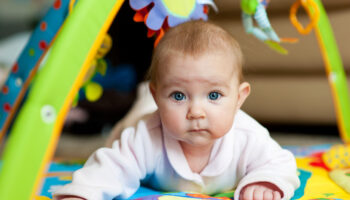Leah Zabari
“You’re dehydrated”, my doctor replied after I went to his office complaining of frequent headaches and low energy levels at work. It didn’t dawn on me that my symptoms were related to my water consumption – or lack of it. I left the doctor’s office and immediately downloaded a water app–an app on my phone that sends me reminders to drink water. I learned that dehydration can lead to fatigue, dizziness, poor concentration and reduced cognitive abilities, which were all symptoms my oldest daughter, who attends middle school, was experiencing as well. I decided to spend the next few days doing some more research on the effects of not drinking enough water.
According to a National Health and Nutrition Examination Survey by the CDC, only fifteen percent of children are getting enough water during the day. That number is appalling! Since most children spend a good portion of their day in schools, including early childhood programs, it is important that teachers do everything they can to make sure the children in their programs are consuming water for their growing bodies and brains! Water is essential for brain health and function and if children are not drinking enough water throughout the day, there could be serious effects on their learning.
In the Infant/Toddler Environment Rating Scale in Item 7 (Meals/Snacks), it is an expectation that children are offered water in between meals and snacks. Now I know why the authors included that expectation! So, what is the solution to making water available to children throughout the day in an early learning environment?
- Be intentional about offering children water throughout the day. Build time in your schedule for water breaks–set a timer reminding you if you need to. Children get so busy playing, that they forget to eat or drink–it’s important that you remind them!
- Make sure that each child in your classroom has a cup labeled with the child’s name on it.
- Make the cups accessible to the children but set boundaries and ground rules first. (Children should not walk around the classroom drinking, if they need a drink, allow them to get their cup and sit at the table with it.)
- If you have low counters that are accessible to children, place a photo of each child on the counter and set their cup on their photo (this works great in younger toddler classrooms for children who might not recognize names yet.) **
** It is important to supervise children while they are eating or drinking. When children’s cups are accessible for them to use during the day, supervise that they are only using their own cup and not touching the cups of their peers. For more information on best practices related to health and safety, please consult Caring for Our Children (https://nrckids.org/CFOC).
Below is a link to the CDC website where you can download the CDC’s Water Toolkit for great resources, tips, ideas, action plans, checklists, and even a sample letter to give to parents about the importance of water consumption.
https://www.cdc.gov/obesity/downloads/early-childhood-drinking-water-toolkit-final-508reduced.pdf




